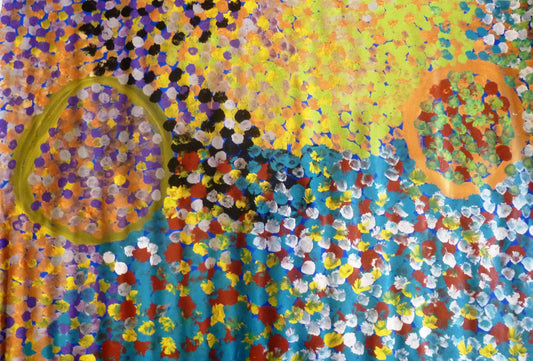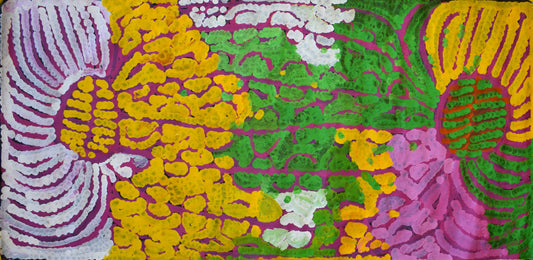Collection: Lorna Fencer Napurrula
-
Lorna Fencer Napurrula 820mm x 1260mm
CODE : 4512Vendor:Lorna Fencer NapurrulaRegular price $4,500.00 AUDRegular priceUnit price / per -
Lorna Fencer 1280 mm x 2600 mm
CODE : 5730Vendor:Lorna Fencer NapurrulaRegular price $19,990.00 AUDRegular priceUnit price / per -
Lorna Fencer 1000 X 1480mm
CODE : 331Vendor:Lorna Fencer NapurrulaRegular price $0.00 AUDRegular priceUnit price / per -
Lorna Fencer Naparula 640 mm x 1310 mm
CODE : 3164Vendor:Lorna Fencer NapurrulaRegular price $3,500.00 AUDRegular priceUnit price / per
Lorna Fencer Napurrurla used her artwork to bring forward the vibrant cultural expressions of the Warlpiri people through her modern indigenous paintings. As a leading indigenous artist of contemporary times, she elevated Aboriginal art by both retelling traditional Dreamtime stories and reshaping how Indigenous art appeared worldwide.
Early Life and Cultural Heritage
Lorna Fencer Napurrurla was born approximately in 1924 within the Yumurrpa area situated in the Northern Territory, where she maintained roots as a Warlpiri cultural keeper. She spent her childhood between multiple locations while taking part in the spiritual narratives and sacred ceremonies of her Aboriginal people. Throughout her childhood, Fencer developed her relationship with nature deeply while acquiring essential survival skills that included land interpretation along with water source finding and seasonal awareness in the demanding desert landscape.
Before pursuing artistry, she served as a young participant in traditional Warlpiri ceremonies while learning storytelling traditions that provided the artistic basis of her future works. She gained a deep understanding of her duty to safeguard traditional knowledge of her people and transfer it to upcoming generations through these life experiences.
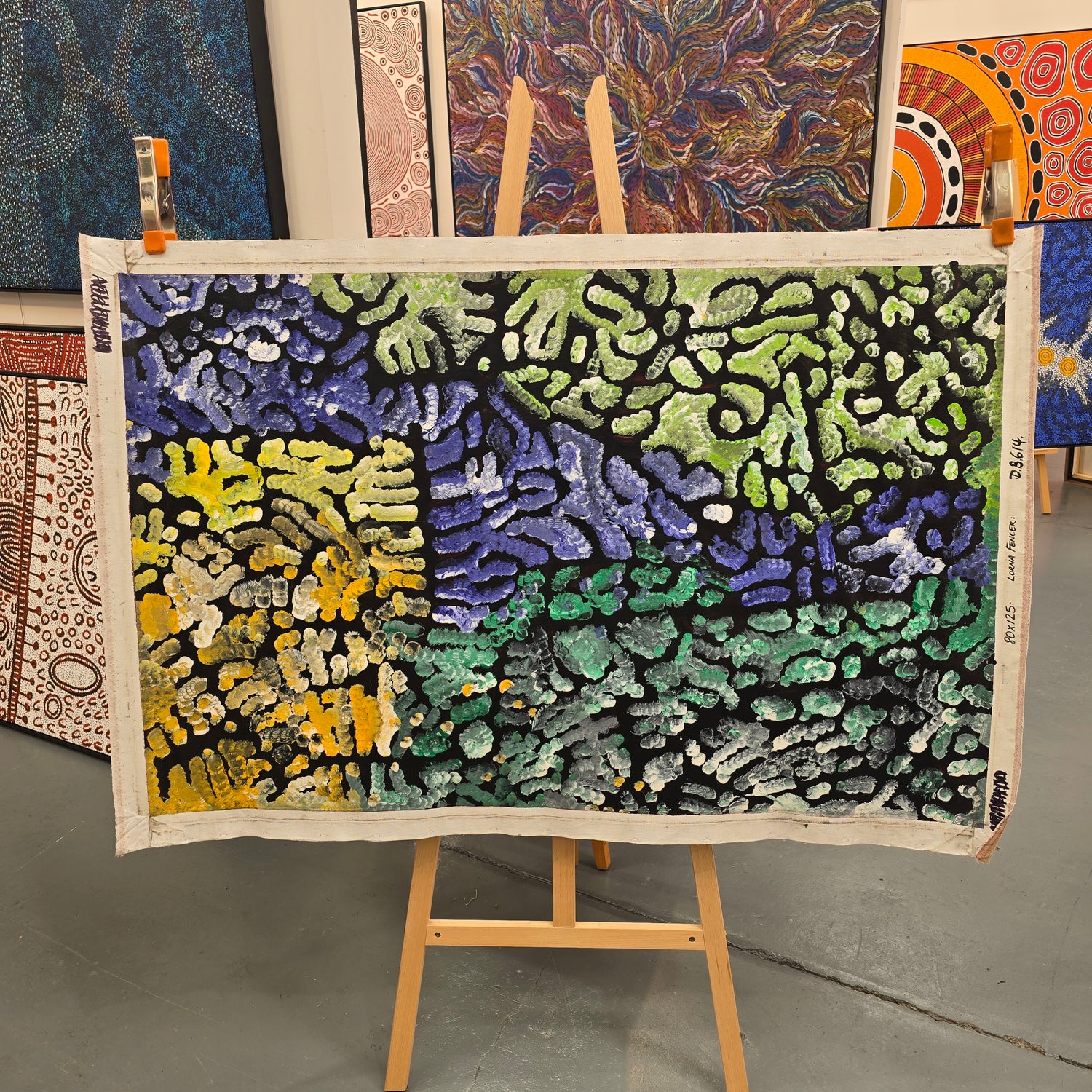
Artistic Journey
During the late 1980s, Lorna started painting as the movement of Indigenous art began picking up pace in Australia. Through her membership in the Lajamanu Art Movement, she developed her unique artistic approach to representing Dreaming stories by using abstract expressions and strong, bold forms. Lorna avoided traditional Indigenous painting styles, which employed dots, while she used brushstrokes freely combined with vibrant colors that made her paintings stand out.

The significant themes in her artwork included bush potatoes (Yam Dreaming), water sources, and ancestral beings, which she portrayed through compositions with vivid colours that expressed the spiritual energy of the land. By exploring new expressions of art, she revised conventional Aboriginal art rules to establish personal and abstract approaches.
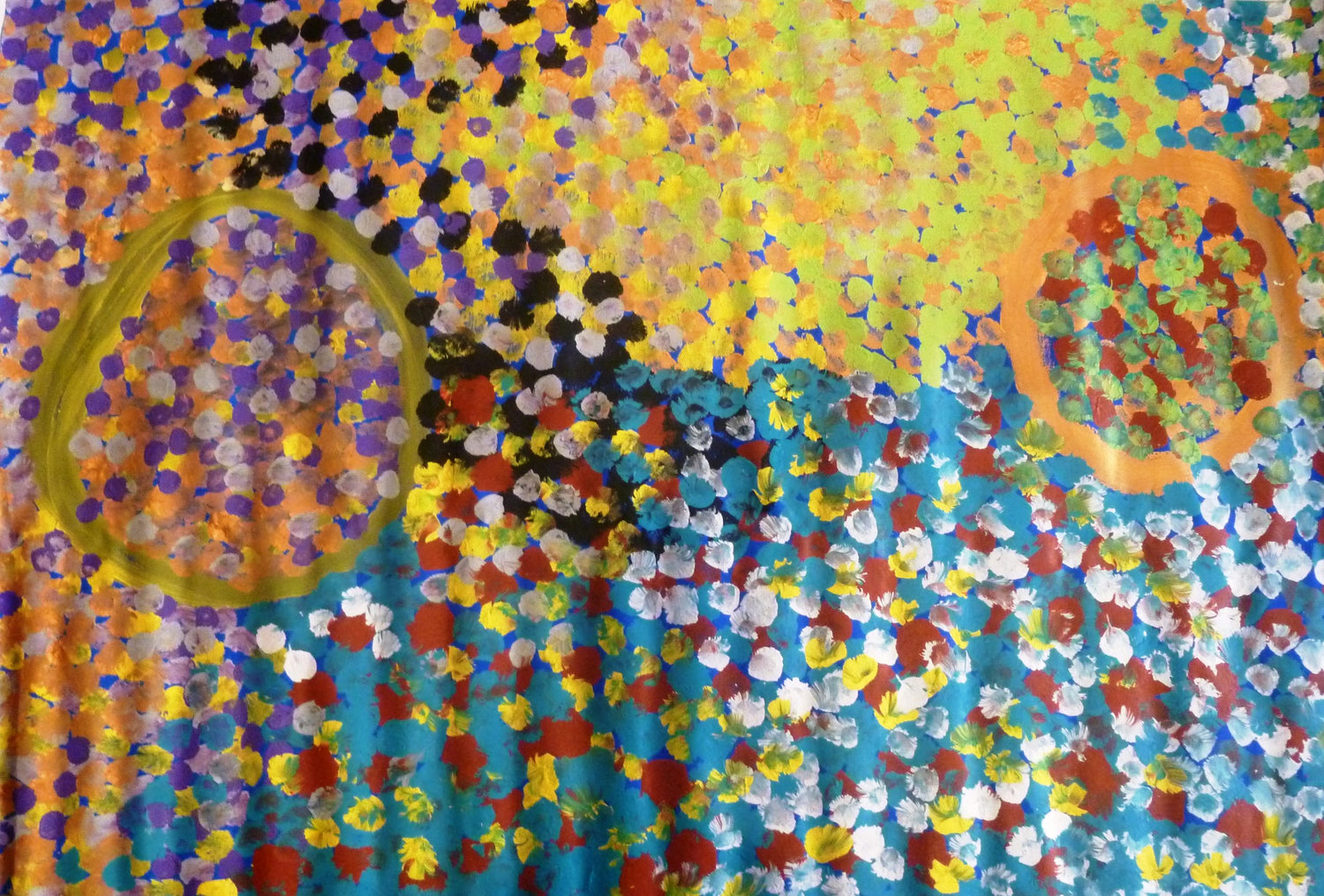
Legacy and Impact
The art of Lorna Fencer achieved international acclaim because her works were displayed in numerous major Australian galleries and institutions as well as international art venues. She led the way to boost contemporary Indigenous art by motivating upcoming generations of artists to move past conventional artistic boundaries.
Beyond visual art, she served as a cultural leader who maintained Warlpiri storytelling traditions by using visual methods for their preservation. Widespread appreciation of Indigenous art began with her participation and continues today because institutions and art enthusiasts highly collect her paintings.
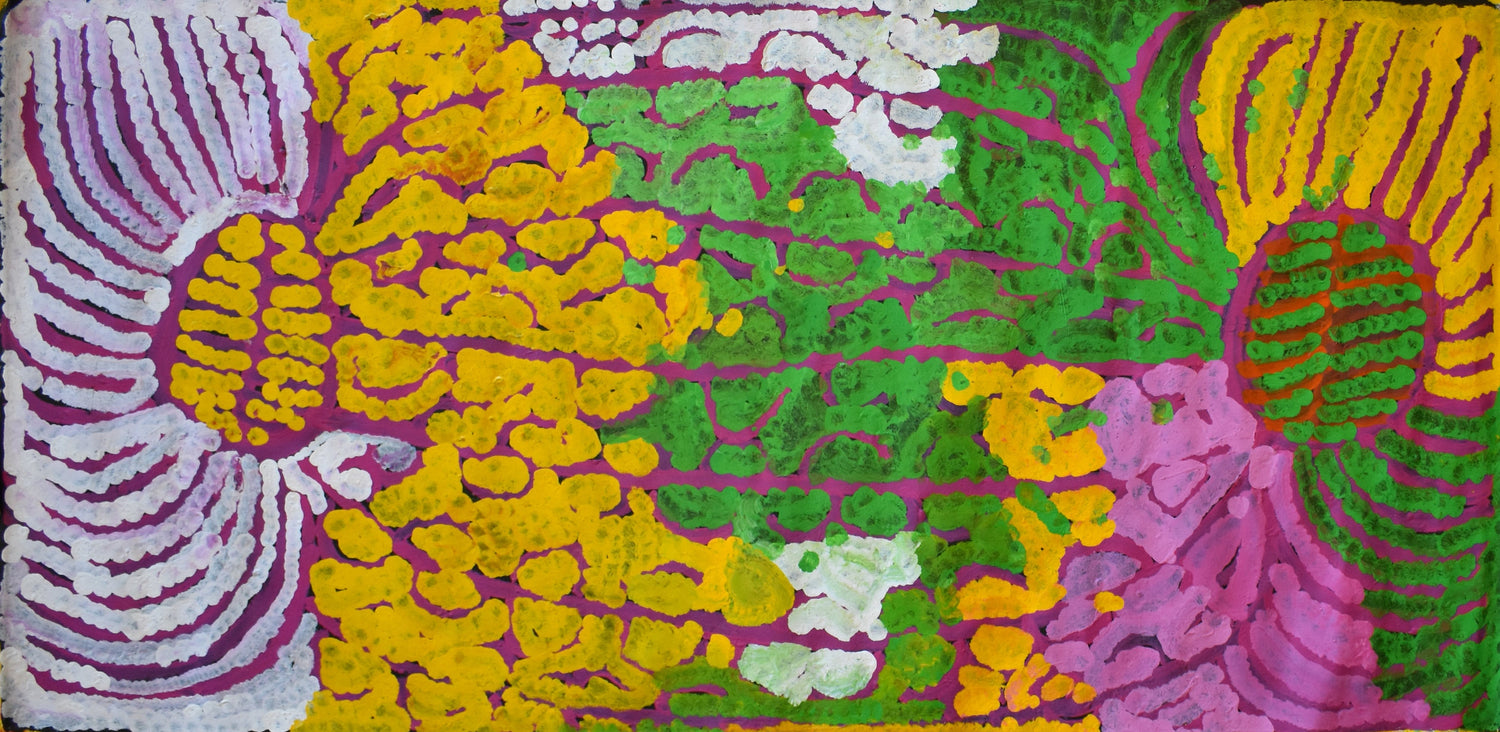
Lorna Fencer Napurrurla existed beyond artistic practices since she brought Indigenous stories to life through contemporary artistic expressions of culture while celebrating identity. The artistic value of her work persists today because it establishes a connection between Indigenous traditions and current artistic trends.
Lorna Fencer’s Trailblazing Art in Mandel
The rising global interest in Indigenous art demonstrates how Lorna's work exemplifies the strength of cultural survival and artistic development.
To explore Lorna Fencer’s and the broader world of Indigenous art, visit Mandel Aboriginal Art Gallery. Her paintings continue to inspire and educate, making them a vital part of Australia's artistic and cultural landscape.



